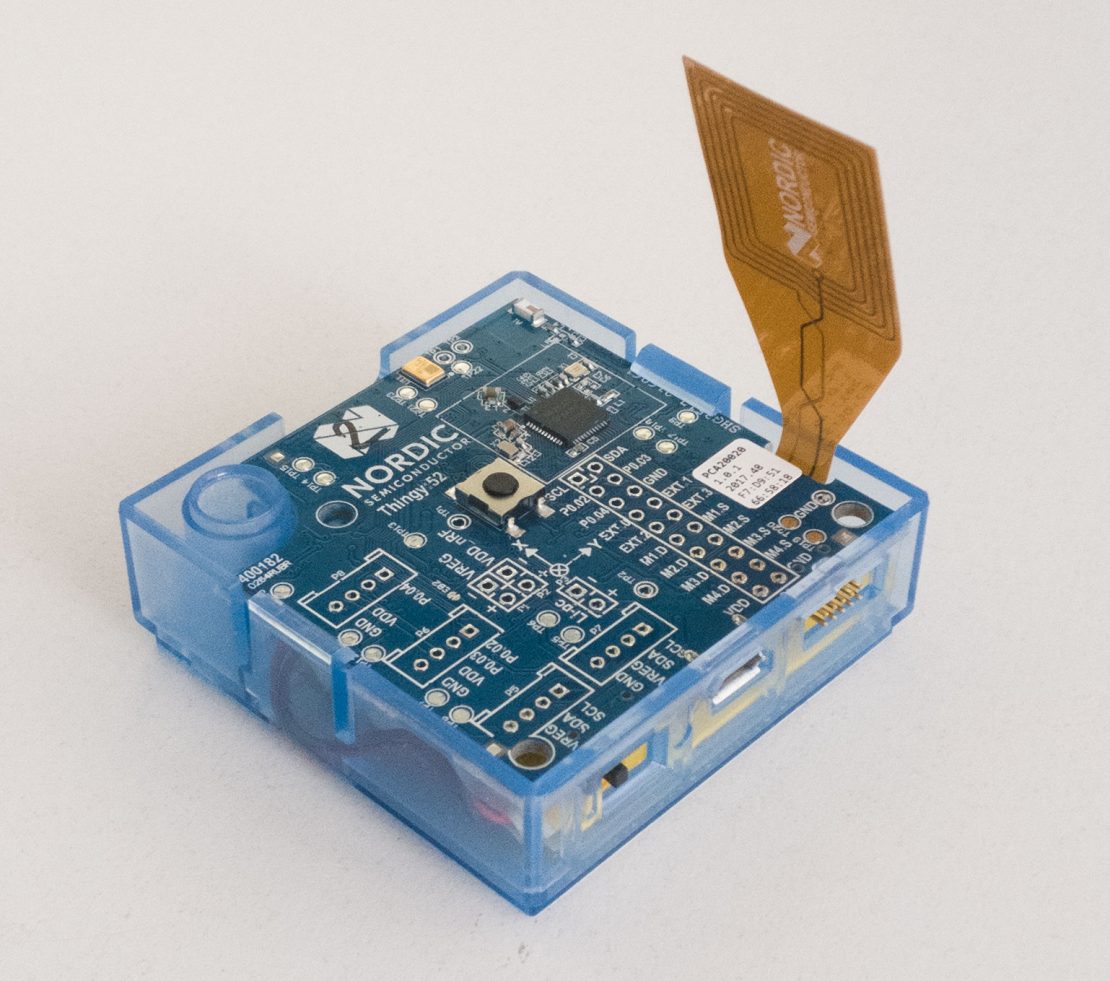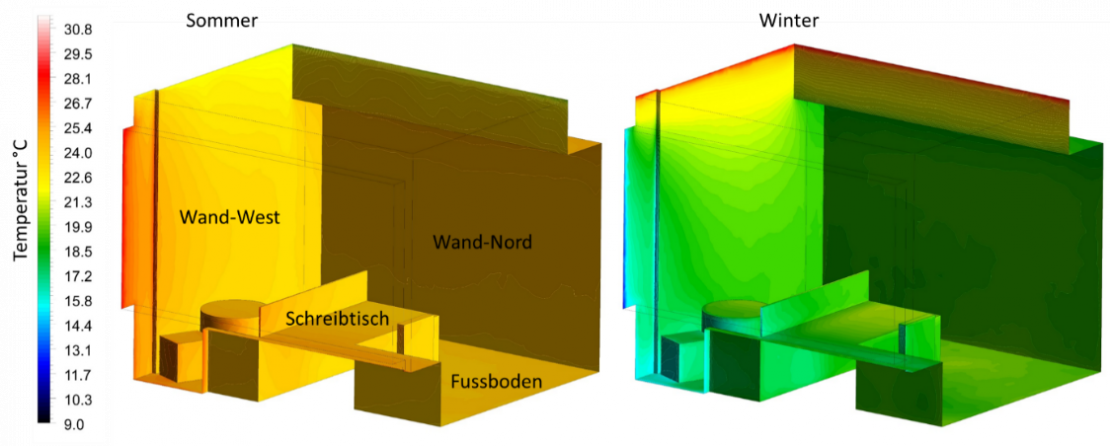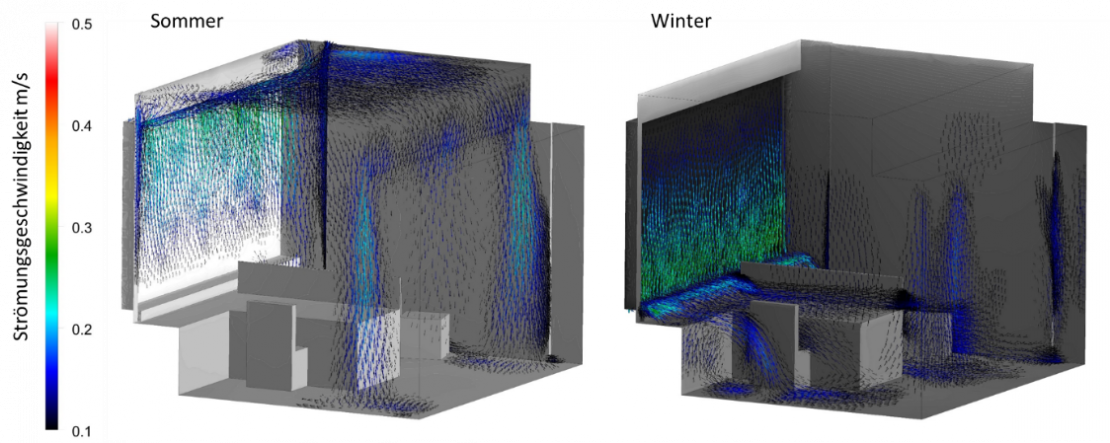- Researchers develop virtual sensor that measures and predicts comfort
- Comfort prediction opens up new opportunities for increasing energy efficiency
- Simulation results provide added value for planning specialists and Building Information Modeling (BIM)
Too warm, too cold, too drafty. The indoor climate has a major influence on how comfortable people feel in rooms and on how productively they work. So far and despite advancing digitalization in building technology, comfort in office spaces hasn’t been adequately addressed. On the one hand, building management focuses on energy efficiency and the associated cost savings. On the other hand, building technology does not record all of the parameters required to determine comfort since the number of sensors used and physical variables that can be measured are limited. Direct user surveys are time-consuming and often fail due to the lack of feedback. In the future, this could be remedied via virtual sensors, leading to significant improvements.
Virtual sensor measures what cannot be measured directly
Within the COMFORT project (Comfort Orientated and Management Focused Operation of Room condiTions) funded by the FFG, a team of building technology experts, construction engineers, simulation experts and data scientists has recently developed a virtual sensor to measure comfort using data-driven AI models and simulation models.
Since comfort cannot be measured directly – meaning there is no comfort sensor that can be purchased as a component – experts resorted to a smart combination of hardware and software: influencing factors, such as temperature and mass flow, are obtained from the existing building management system and systematically combined with additional measured values, such as the opening of windows and the air flow, of a recently developed, wireless senor network. It consists of about 40 nodes, each equipped with several sensors, measuring similar parameters as the building management system, but instead of one measuring point per room, there are ten or more. In addition, meteorological data is included in the database.
During the simulation, the building’s entire energy consumption due to heating or cooling is simulated. In addition, the temperature and the air flow can be simulated in any random point inside the building. By merging various data sources into a homogeneous database, the big data principle is applied.
“All this data creates the basis of the novel combination of AI and simulation models, enabling both methods to optimally unfold their respective strengths. AI methods, for example, are well suited for predicting long-term warming during the summer months, while a simulation can precisely determine short-term fluctuations in air flow. The results of AI methods and simulation together feed the virtual sensor, which derives a comfort value based on that,” explained Heimo Gursch, Project Manager at Know-Center.
Proof via a Practical Test
The virtual sensor was tested for its practicality in the test boxes at the Technical University of Graz and on campus of LogicData in Deutschlandsberg. It appeared that determining a more precise comfort level allows to identify margins for energetic improvements. An energy flow analysis, for example, showed that the air exchange rate in one of the test rooms was too high. In this case, the energy consumption of the ventilation was reduced by a lower air exchange without diminishing the comfort.
Future Integration with Building Information Modeling (BIM)
BIM is a concept for digital planning of buildings and managing them after construction. The same information that is stored in the BIM is required to create simulation models. So far, however, there are no software tools to convert the information from BIM automatically and fully into simulation models. Most of the information must be transferred manually and in the event of changes in BIM adapted anew. Within the project, a catalog of requirements was created on how the exchange between BIM and the simulation models can be automated in the future. An automated exchange offers added value for planning specialists and BIM managers since they can use simulation results for comfort and energy efficiency assessments in the early planning stages.
The following institutions were involved in the COMFORT project: Know-Center, Silicon Austria Labs, Salzburg University of Applied Sciences, the Institute for Thermal Technology of Graz University of Technology, EAM Systems GmbH, EUDT Energie- u. Umweltdaten Treuhand GmbH, Thomas Lorenz ZT GmbH, IKK Engineering GmbH, LOGICDATA , Central Institute for Meteorology and Geodynamics.


